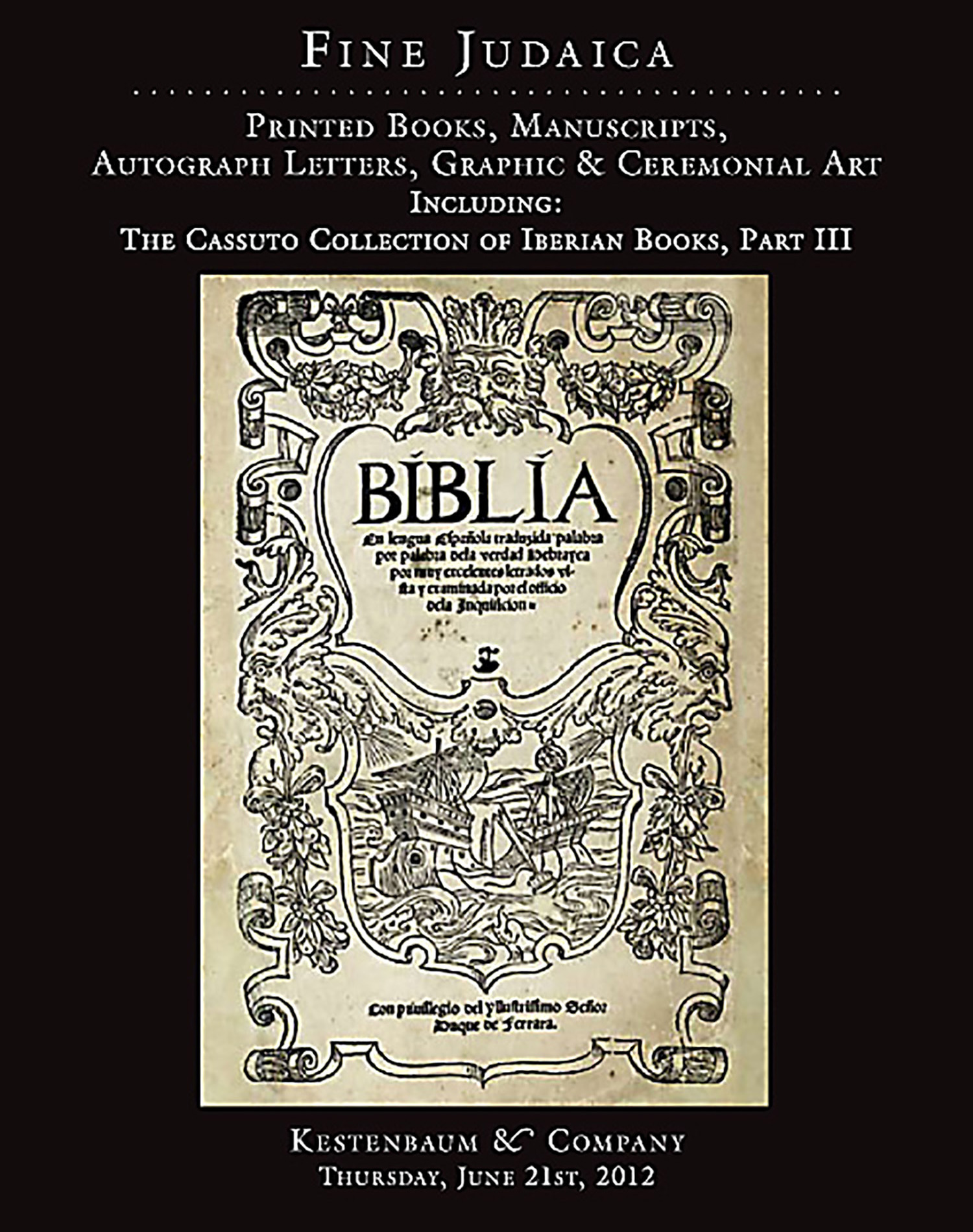Friedman, Aaron Zebi. Tub Taam; or, Vindication of the Israelitish Way of Killing Animals, called Shechitah.

AUCTION 55 |
Thursday, June 21st,
2012 at 1:00
Fine Judaica: Printed Books, Manuscripts Autograph Letters, Graphic & Ceremonial Art
Lot 27
(AMERICAN JUDAICA).
Friedman, Aaron Zebi. Tub Taam; or, Vindication of the Israelitish Way of Killing Animals, called Shechitah.
New York: 1876
Est: $1,200 - $1,800
PRICE REALIZED $2,300
A Response to the First anti-Shechitah campaign in America.
Aaron Friedman (1822-76), a native of Stavisk, Poland, served as shochet, or ritual slaughterer, of his hometown before emigrating in 1848 to New York, where he was employed by one of the largest abattoirs, where on account of his strict Orthodoxy and learning, he was known as the”Ba’al Shem of America.”
In 1866 the first anti-Shechitah campaign in America was waged by the Society for the Prevention of Cruelty to Animals. Henry Bergh, president of the Society, sent a letter that year to the proprietor of a kosher abattoir in New York accusing him of engaging in “barbarous, revolting, and wicked” practices. Bergh further called on him to desist from violating the laws of New York and of God by “mangl[ing] and tortur[ing] his creatures.” Aaron Friedman composed this pamphlet, Tub Taam, to refute Bergh’s accusations. He not only succeeded in silencing Bergh, but later, in 1885, Bergh even defended shechitah against charges of cruelty leveled by the Philadelphia branch of his Society.
Among those who supported the Jewish position in the struggle against the Society for the Prevention of Cruelty to Animals was President Ulysses S. Grant. According to Joakim Isaacs, Grant “was moved [by the English translation]…to eat only ritually slaughtered meat in the latter part of his life.”
See J. Isaacs, “Candidate Grant and the Jews,” American Jewish Archives 17. 1 (1965) p. 15, n. 31; I. H. Sharfman, The First Rabbi (1988) pp. 591-92; Y. Goldman, Hebrew Printing in America no. 1092; JE, Vol. V, p. 518.
